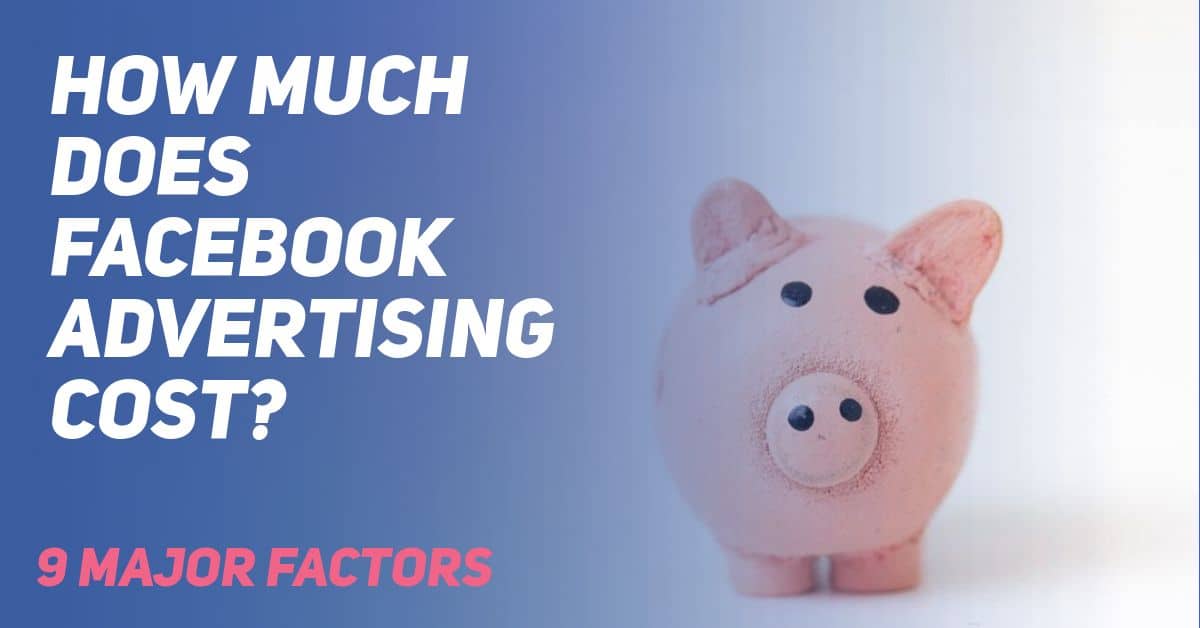
These are the nine major factors of Facebook advertising costs, from the easiest to the most complex.
1. For each Facebook ad you run, you’ll set a separate budget.
Facebook will evenly spend the set budget for each ad throughout the dates you set for the campaign. You can choose accelerated delivery, if you want, which boosts the ad significantly for the time you specify.
2. There is a difference between budget and spend.
Budget is the money you want to spend for the ad, but you won’t necessarily spend that much. Facebook will not go over your budget, but it may go under your budget based on your ad’s performance.
Spend is money from your ad budget that was actually used.
Which leads us to…
3. Facebook charges you for your ads based on a bidding system.
What that means for you is that your ad, based on its budget and performance, is competing for impressions. Facebook ads are ranked based on value. The value is determined by the quality of a photo or video, how long your ad video may be, the ad copy you use, etc.
Basically, Facebook will put the best ads in the prime spots. The prime ad spots, peak times and main audiences are what you’re bidding for against other competitors. Spend the time to make a great ad so yours will rank above other ads in your budget and audience.
4. HOW you pay for your Facebook ads determines WHEN you’ll pay for them.
After adding a payment method to your Facebook ads account, you will choose between two payment settings. Depending on which option you select, you will be charged according to its particular pay schedule.
Option 1: Automatic Payments.
When you establish a billing threshold, Facebook will automatically charge you when you spend that amount. Any cost that’s leftover—let’s say, for the month—will be billed to you on your regular monthly billing date. If you’re using a debit or credit card, or even PayPal, to pay for ads, this is how you will pay.
Note 1: If you’re just beginning to advertise on Facebook, your billing threshold is set to be small automatically. Think of it as a type of Facebook credit or credibility system. If you are successful with your billing threshold payments, final threshold amounts can and may be raised.
Note 2: Let’s say you have a billing threshold of $50. When Facebook advertising costs for your ad(s) reach $50, you will be charged $50. After this, the billing threshold may be reached again in a given month.
*Note 3: You can be charged your billing threshold multiple times a month or not at all, depending on how much you’re spending on ads.
Option 2: Manual Payments.
Manual payments include a payment method such as PayTM. For manual payments, you will first add money to your account, and then, Facebook will, once a day, subtract the money it used. A billing threshold is, therefore, irrelevant for manual payments.
5. You can view your ESTIMATED charges at any time.
Facebook’s Ads Manager allows you to see the estimated charges at any time. Go to the Ads Manager, and then, go to the Billing section. There, you will see final charges of what exactly you paid for an ad and how it did. You will also see the current estimated charges for the next billing cycle.
PLEASE NOTE: For ANY Facebook ads manager account, YOUR FINAL BILL CAN (AND PROBABLY WILL BE) MORE THAN YOUR BUDGET. The reason for this is that your ads account may contain more than one ad that you’re running, but Facebook will never go over your budget for each particular ad. Just don’t expect your bill to ONLY include the ad you freshly created if you have multiple running ads.
6. You won’t be charged on your billing date if you’ve already paid everything, if your balance is zero or if your ad costs were less than $1 USD.
7. If you set an account spending limit, your ads will pause (stop running and stop accruing costs) until you remove or increase your ads account spending limit.
Understanding the differences between billing thresholds, budgets and spending limits.
8. The BILLING THRESHOLD mainly determines WHEN you will be charged.
When your advertising costs reach your $100 billing threshold, you will be charged $100. Think of it as an increments system. Keep in mind that these $100 increments could be reached multiple times a month.
Once again, this is simply at what amount of money do I want to be officially charged. This method keeps down on small, random, daily charges coming from Facebook (and cuts down on their transaction fees).
9. The BUDGET you set means the amount of money you are willing to spend to show your ad(s) in the timeframe you also determined.
This is the HOW part—as in, how much your ad means to you, how much you want it to be shown and how much you think your ad is worth.
There are two budget types:
Budget Type 1: Lifetime Budget.
This budget is the total amount you want to spend during the ad’s lifespan. A lifetime budget is probably better than the daily budget for a campaign, since Facebook can optimize the times and the days your ads are shown based on when your audience is online.
Budget Type 2: Daily Budget.
A daily budget is exactly how it sounds. If your budget is $10 a day, Facebook will do its best to best utilize your $10 a day. Some days, however, may be better for your particular audience than others.
If that doesn’t matter to you, a daily budget is a good way to control and to keep your ad budget consistent. Monitor and control Facebook advertising costs and everything else with The Campaign Maker.
TRY IT FREE for 30 Days. Make stunning, top-performing ads in seconds and manage them with ease!